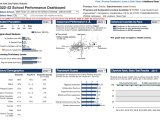You are here:
Admissions and Access at Mark Twain Today
Today, Mark Twain Intermediate School is an example of the continuing racial and ableist segregation in New York City public schools.1 The school is selective - meaning that students can’t simply enroll, but must apply and be chosen through a system that evaluates them through a test, arts audition, or sports tryout. These processes are called “admissions screens,” and New York City schools use them much more frequently than do other US school systems.2 While admissions screens may seem to select students based on their talents or skills, they favor those with more resources. Students with more money or social resources are more likely to have had support in developing their talents and skills in ways that help them succeed on tests or auditions. Tests or auditions can also be culturally biased.
Read More
Mark Twain’s screened admissions date back to the desegregation efforts of the early 1970s. In 1974, Community School District 21 and the federal district court debated how to bring more white students into Mark Twain. At the time, the school had a much smaller proportion of white students than attended school in District 21 overall. The district and the court approved a plan to desegregate Mark Twain by designating the school as specifically for academically “gifted” students from District 21 (which the plan assumed would be primarily white students). Later, the school’s admissions were changed to welcome “gifted and talented” students from anywhere in New York City.
Mark Twain’s desegregation plan, which sought to keep its white student enrollment at 70 percent of the student population, was ended by the Department of Education in 2008. From that point forward, students’ race was not considered as an explicit factor in admissions, but the admissions screens remained.3
Mark Twain’s enrollment today shows that screened admissions at Mark Twain work to exclude Black and Latinx students and privilege white and Asian-American students.4 Additionally, few students with disabilities or disability labels attend Mark Twain today, and many of those who do are in separate self-contained classrooms rather than integrated with the school’s non-disabled students. Mark Twain reflects citywide patterns, as proportionally fewer Disabled students and fewer Black and Latinx students attend New York City’s selective-admissions schools than are present in the city’s schools overall. Mark Twain’s building also remains inaccessible to many students with physical disabilities.
-
John Kuscera, “New York State’s Extreme School Segregation: Inequality, Inaction and a Damaged Future,” The Civil Rights Project, UCLA, March 26, 2014, https://civilrightsproject.ucla.edu/research/k-12-education/integration-and-diversity/ny-norflet-report-placeholder; Danielle Cohen, “NYC School Segregation Report Card: Still Last, Action Needed Now,” The Civil Rights Project, UCLA, June 10, 2021, https://www.civilrightsproject.ucla.edu/research/k-12-education/integration-and-diversity/nyc-school-segregation-report-card-still-last-action-needed-now. ↩︎
-
Troy Closson, “Court Allows Case Challenging Segregation in N.Y.C. School to Advance,” The New York Times, May 2, 2024, https://www.nytimes.com/2024/05/02/nyregion/nyc-schools-segregation.html. ↩︎
-
Alexandra Freidus and Pedro Noguera, “From ‘Good Will’ to ‘Anachronism’: Racial Discourse, Shifting Demographics, and the Role of School Desegregation in the Public Good,” Humanity and Society 39, no. 4 (2015): 394-418. ↩︎
-
For data from one Brooklyn school district, see WXY Studio, “District 15 Diversity Plan,” 2018, p. 35, https://www.wxystudio.com/uploads/2300023/1537391998612/180919_D15DiversityPlan_FinalReport.pdf. ↩︎

